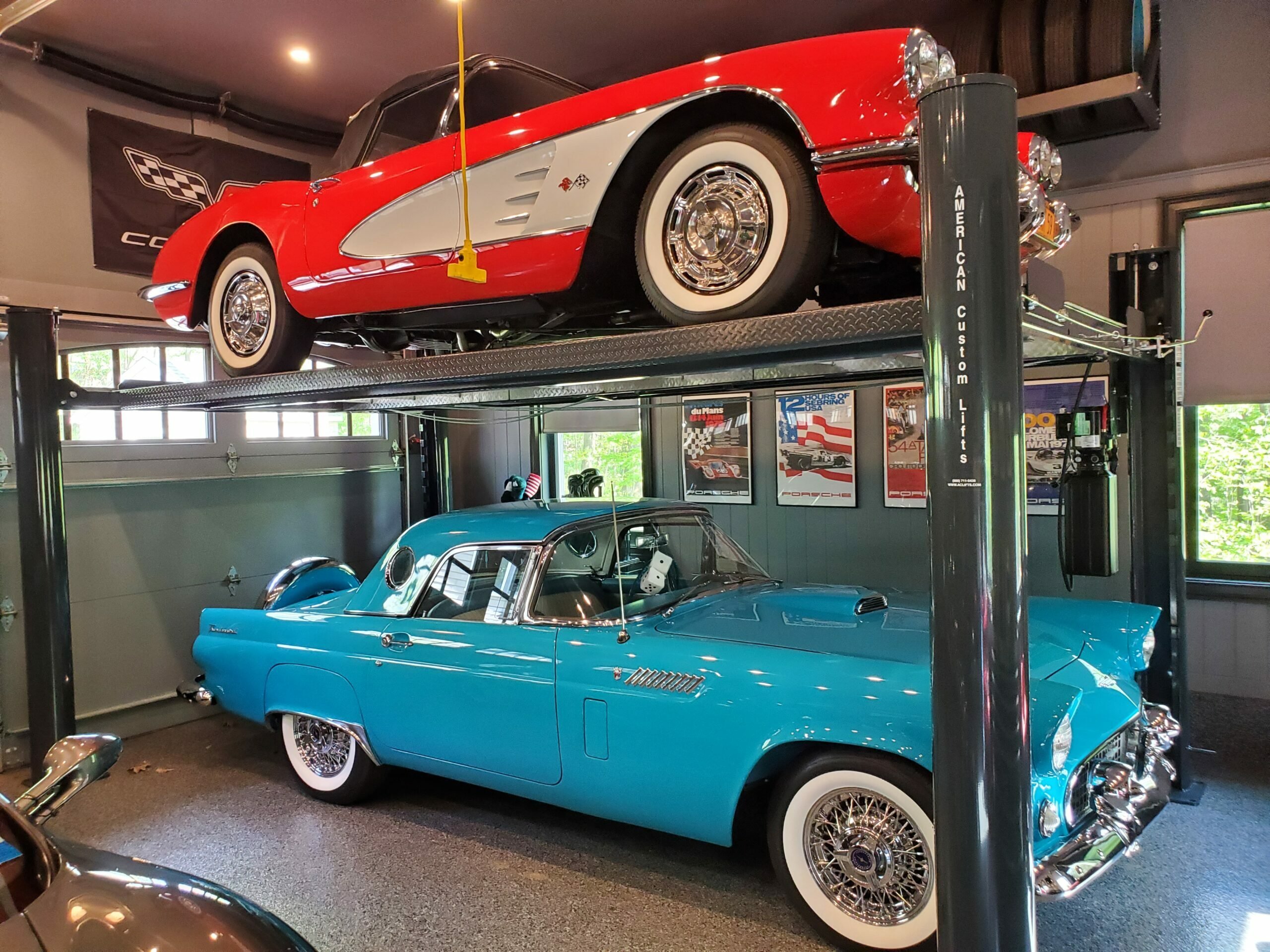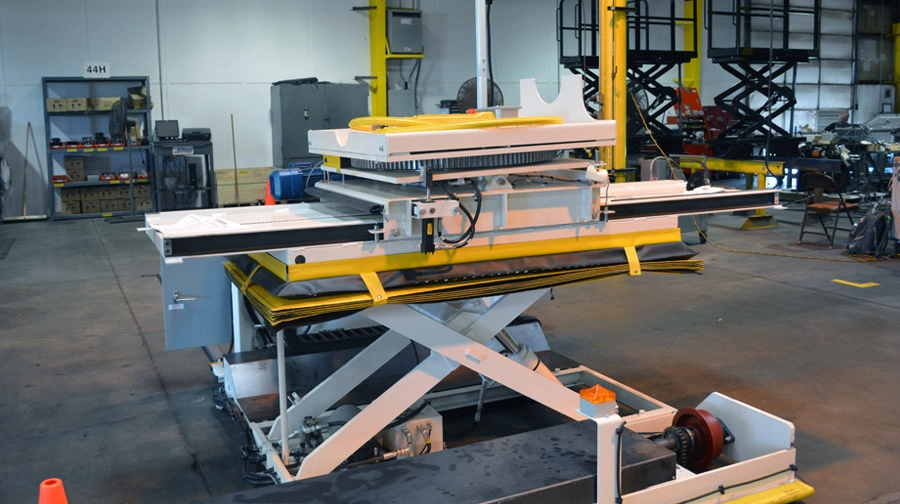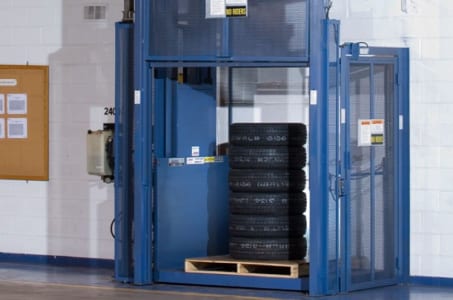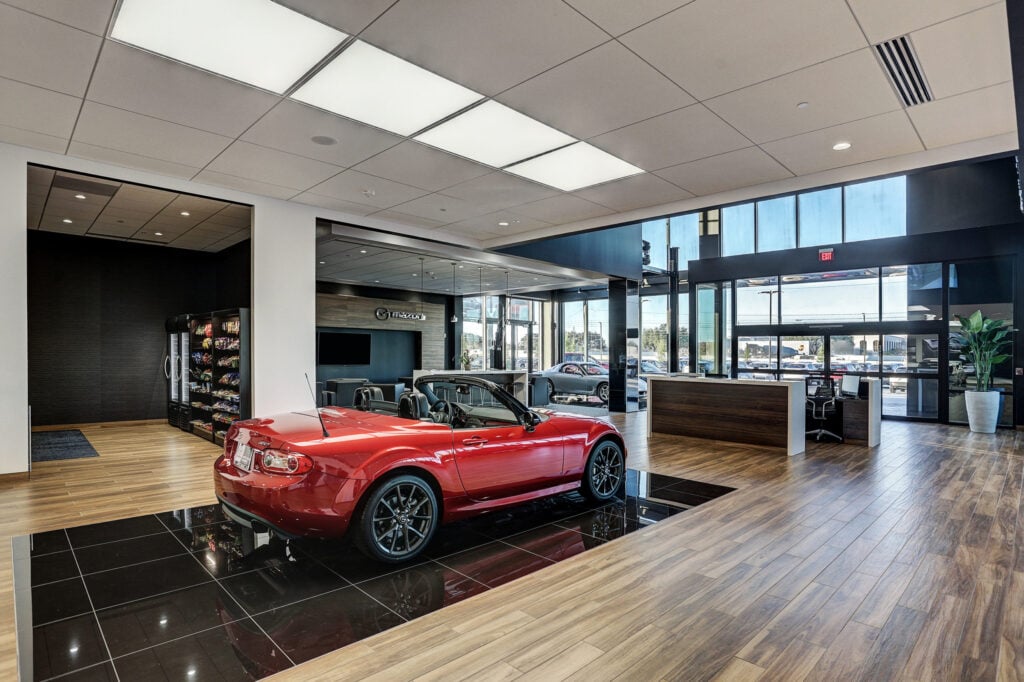Freight elevators are the workhorses that quietly keep many businesses and industries running smoothly. These specialized vertical transportation systems efficiently and precisely move heavy loads, equipment, and cargo between floors. In this guide, you’ll learn about the inner workings of freight elevators, their critical advantages over passenger elevators, the different types available to suit various needs, important safety considerations, and how the latest technological advancements are shaping the future of this vital industry. Whether you work in manufacturing, warehousing, healthcare, or commercial real estate, understanding freight elevators is crucial for optimizing logistics and operational productivity.
Table of Contents:
- What Are Freight Elevators?
- How Do Freight Elevators Work?
- Advantages of Freight Elevators
- Can Passengers Ride On Freight Elevators?
- Safety and Regulatory Oversight
- Freight Elevator Classifications
- Types of Freight Elevators
- Technological Advancements and Sustainable Design
- Freight Elevator Manufacturers
- Freight Elevator Costs
- Conclusion
What are Freight Elevators?
Freight elevators are designed to handle various loads and operate in diverse environments, from warehouses and manufacturing facilities to hospitals and high-rise office buildings. Their robust construction and specialized features set them apart from passenger elevators, primarily designed for people’s transport.
One key difference is the size and weight capacity of freight elevators. These workhorses can accommodate significantly larger and heavier loads, with some models carrying up to 50,000 pounds (22,680 kg) or more. Their large capacity enables them to transport bulky items such as industrial machinery, pallets of goods, and even vehicles.
In addition to their impressive lifting capabilities, freight elevators often feature specialized design elements, such as oversized doors, reinforced floors, and durable finishes that can withstand the wear and tear of frequent use. Many also incorporate advanced control systems and integrated safety features to ensure smooth, precise, and secure operation.
Freight elevators can also be customized to suit the specific needs of different industries and applications. For example, particular designs allow them to accommodate the unique requirements of hospitals, featuring specialized mechanisms for transporting patients and medical equipment. Freight elevators may be equipped with temperature-controlled environments to maintain the integrity of temperature-sensitive goods. The versatility and adaptability of freight elevators have made them indispensable in various settings, from manufacturing plants and warehouses to hospitals, hotels, and even high-end retail establishments.
How Do Freight Elevators Work?
The core functionality of freight elevators revolves around their ability to move heavy loads between floors efficiently. Freight elevators achieve their function through the coordinated operation of several vital systems:
The car or platform is the main transport vessel, built to withstand the rigors of frequent heavy use. Powerful motors, often electric or hydraulic, provide the lifting force necessary to raise and precisely lower the platform. Advanced control systems, including programmable logic controllers (PLCs), ensure accurate positioning and safe operation.
Specialized safety features, such as reinforced doors, floor locks, and emergency braking systems, play a crucial role in protecting the cargo and any personnel involved in the loading and unloading. These safety measures help to minimize the risks associated with the vertical transportation of large, heavy, and potentially hazardous loads.
Advantages of Freight Elevators
The design and capabilities of freight elevators provide several key advantages that make them indispensable in a wide range of commercial and industrial settings:
Higher Weight Capacity
Freight elevators are engineered to handle significantly heavier loads than passenger elevators, with some models able to lift 50,000 pounds or more. Their weight capacity allows them to transport bulky, oversized, or extremely heavy items that would be impractical or impossible for a standard passenger elevator.
Rugged Design
Freight elevators feature robust construction, reinforced components, and durable finishes to withstand the rigors of frequent heavy use. This rugged design ensures reliable performance and a longer operational lifespan, even in demanding environments.
Improved Efficiency
Freight elevators help streamline building workflows and logistics by facilitating the seamless vertical transportation of goods and materials. This improved efficiency can translate to increased productivity, faster inventory management, and enhanced overall operational performance.
Disadvantages of Freight Elevators
While freight elevators offer numerous advantages, they also have some inherent limitations that set them apart from passenger-focused elevator systems:
Slower Movement
Generally, freight elevators are designed for the safe and controlled transport of heavy loads rather than rapid passenger transport. As a result, they often move at a slower pace than their passenger-oriented counterparts.
Passenger Restrictions
In most cases, freight elevators are not designed to accommodate passenger riding. While some are equipped to allow for passenger transport in certain situations, they must meet specific code requirements to ensure passenger safety.
Can Passengers Ride on Freight Elevators?
The issue of passengers riding on freight elevators is nuanced. There are distinct differences between freight elevators and service elevators, which are designed to transport both goods and people.
Freight elevators are intended for moving heavy or bulky items and are typically equipped with different safety features and passenger accommodations than service elevators. However, some freight elevator models are specifically designed to allow passenger transport, provided they meet the necessary code requirements for passenger safety.
These code-compliant freight elevators often feature additional safety measures, such as enhanced door control systems, emergency communications, and specialized signaling to alert passengers. It is important to note that the specific regulations and allowances for passenger riding on freight elevators can vary widely based on local building codes and safety standards.
In general, consulting with elevator professionals and local authorities is advisable to determine the appropriate use and passenger-carrying capabilities of a particular freight elevator installation.
Safety and Regulatory Oversight
Freight elevator safety is paramount for protecting cargo and the personnel involved in the loading and unloading process. In addition to the basic safety features, such as reinforced doors and emergency braking systems, passenger freight elevators incorporate a range of advanced safety mechanisms, including floor locks, specialized signaling systems, and emergency communication systems.
The freight elevator industry is subject to rigorous safety standards and regulatory oversight, with industry associations and certifying bodies playing a crucial role in establishing and enforcing the latest safety practices. As the industry’s needs and challenges evolve, these safety standards and regulations have also adapted to keep pace, ensuring that freight elevators continue to operate safely and reliably.
Freight Elevator Classifications
- Class A: Designed for general freight loading up to 2,000 lbs. If the elevator’s classification is unknown, using any other loading method could be dangerous.
- Class B: Applies specifically to freight elevators intended to transport motor vehicles. Depending on the elevator’s capacity, these elevators can carry vehicles weighing up to 6,000 lbs.
- Class C1: Allows an industrial truck to load or unload the elevator. The truck’s combined weight and load cannot exceed 6,000 lbs to 15,000 lbs, the typical range for Class C1 elevators. The loading truck can remain in the elevator during operation.
- Class C2: Permits loading the platform up to 150% of the elevator’s stated capacity, typically between 15,000 lbs and 30,000 lbs. A one-piece load equal to the elevator’s maximum capacity can be loaded using a forklift or lift truck. However, the loading equipment must be removed before operating the elevator.
- Class C3: Is for heavy concentration loading, where the static weight during loading and unloading does not exceed the rated load, typically over 30,000 lbs. The weight of the load and any equipment used to move it must not exceed the elevator’s maximum weight capacity. Class C3 elevators often transport one-piece loads equal to their maximum capacity. It’s important to note that Class C loading is not permitted for limited-use/limited-application (LULA) elevators or accessibility lifts, which have different design and safety requirements.
Types of Freight Elevators
While the traditional freight elevator is the most common type, several specialized variants serve specific applications:
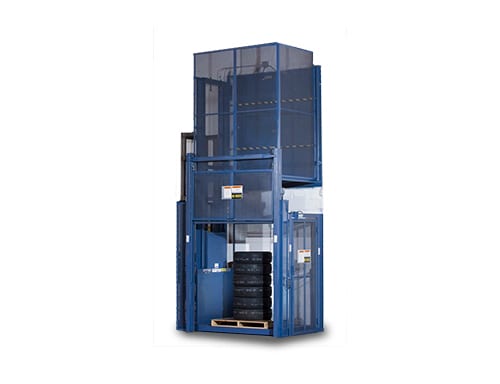
Vertical Reciprocating Conveyors (VRCs)
VRCs are not exactly freight elevators but they can handle many of the same workloads. In our blog post on VRCs, we dive deeper into the comparison of the two. VRCs are designed for the frequent, short-distance transport of small to medium-sized loads. These elevators operate on a vertical conveyor, moving loads up and down between floors without needing a fully enclosed hoistway. VRCs are often used in warehouses, manufacturing facilities, and other industrial settings where rapid, high-volume vertical transportation is required.
Hydraulic VRCs and Mechanical VRCs are the two primary sub-types of Vertical Reciprocating Conveyors, each with unique design and performance characteristics.
Sidewalk Elevators
Sidewalk elevators are a specialized type of freight elevator that provides street-level access to a building’s basement or lower floors. They are typically used to move goods, materials, and equipment between the street and the building’s interior without the need for ramps or other vertical transportation methods.
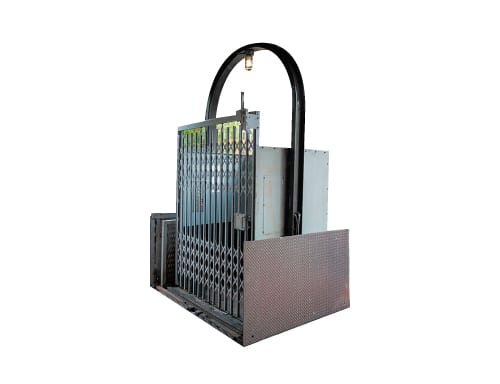

Class B Car Elevators
While most freight elevators are not designed to accommodate passengers, some models, known as Class B Car Elevators, are specifically engineered to transport vehicles with passengers. These elevators must meet the exact safety requirements as passenger elevators to ensure the safe transport of both cargo and riders.
Technological Advancements and Sustainable Design
As technology advances, freight elevators have also evolved to meet the changing demands of modern industries and buildings. Recent innovations include the integration of smart control systems, which optimize energy efficiency and performance, and the incorporation of regenerative braking systems that capture and reuse energy during the elevator’s descent.
Furthermore, freight elevators are essential for sustainable design and energy-efficient building practices. Their robust construction and customizable features allow for the integration of energy-saving technologies, such as solar energy, LED lighting, and advanced insulation, which contribute to a building’s overall environmental performance by providing a low energy solution to move goods.
Across the industry, there is a growing emphasis on environmental sustainability, with manufacturers and customers seeking freight elevator solutions that prioritize energy efficiency and a reduced carbon footprint. This trend, coupled with the increasing demand for customized and versatile freight elevator systems, is shaping the industry’s competitive landscape and driving innovation.
Freight Elevator Manufacturers
The freight elevator market is dominated by a few key manufacturers, both domestic and international, each offering their unique strengths and specialties:

Autoquip is a well-respected American manufacturer of high-quality freight elevators known for their robust design and reliable performance. Its elevators are often praised for their Made-in-USA craftsmanship, although as a large manufacturer, its customer support can be limited. AC Lifts is an authorized dealer of Autoquip lifts and our dedicated team works with Autoquip to provide specialized customer support, including design, installation, and maintenance support.
At AC Lifts, we specialize in designing, installing, and maintaining high-quality American-made freight elevators manufactured by our partners at ACL Fab, another prominent American manufacturer. ACL Fab stands out for its exceptional manufacturing capabilities. It is known for its innovation and attention to detail, making it a popular choice for industrial and commercial applications.
The freight elevator market also includes several international manufacturers, primarily from countries like China and India. Imported freight elevators may be available at a lower cost, but buyers will sacrifice quality and customer support compared to their American-made counterparts.
Freight Elevator Costs
The cost of a freight elevator can vary significantly depending on specific factors, including the size, weight capacity, features, and customization requirements of the particular system.
The primary types of costs associated with a freight elevator installation include:
- Base unit cost
- Custom or specialized features
- Installation and site preparation
- Ongoing maintenance and servicing
On average, the total cost of a freight elevator can range from $30,000 to $100,000 or more, depending on the complexity and requirements of the project. Working closely with a knowledgeable sales team, project manager, and experienced installers is crucial to selecting and installing the most suitable and cost-effective freight elevator solution.
Conclusion
Freight elevators are the unsung heroes of vertical transportation. They quietly and efficiently move goods, materials, and equipment within countless commercial and industrial buildings. These specialized elevator systems are vital in supporting modern businesses and industries’ smooth operation and productivity, from warehouses and manufacturing plants to hospitals and high-rise office complexes.
As technology advances, the demands on transportation systems grow, and the importance of freight elevators becomes more pronounced. By providing reliable, high-capacity, and customizable vertical transportation solutions, these workhorses of the elevator industry will remain an indispensable component of the infrastructure that sustains your facility’s business operations.



